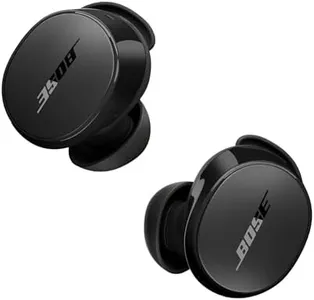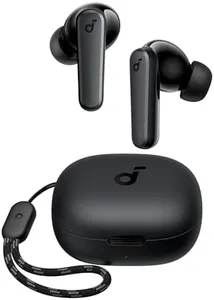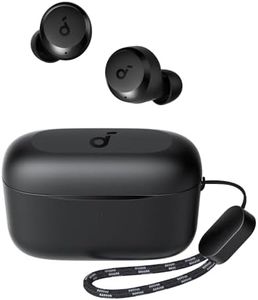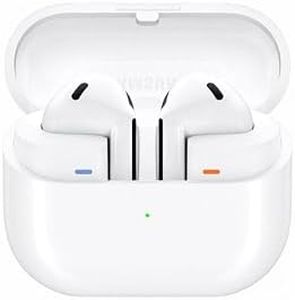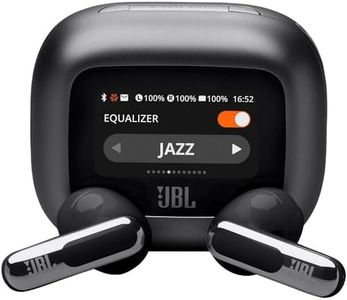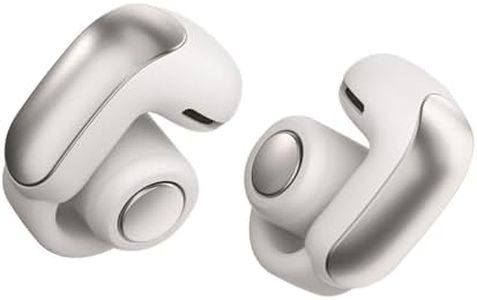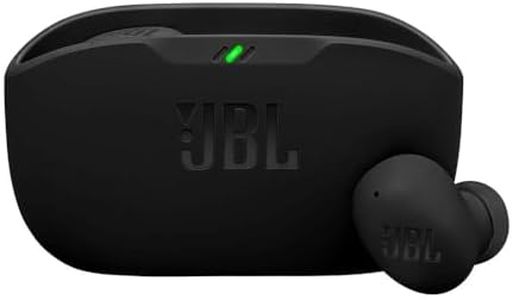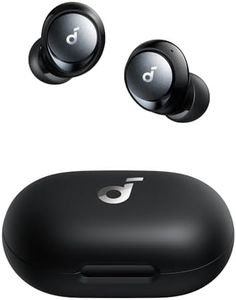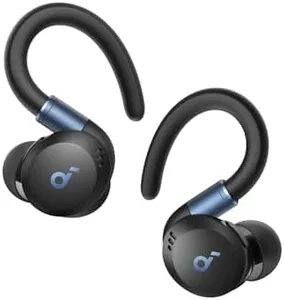We Use CookiesWe use cookies to enhance the security, performance,
functionality and for analytical and promotional activities. By continuing to browse this site you
are agreeing to our privacy policy
10 Best Workout Earbuds
From leading brands and best sellers available on the web.Buying Guide for the Best Workout Earbuds
When choosing workout earbuds, it's essential to focus on how they will support your exercise routine. Think about where and how you’ll use them—heavy workouts at the gym, jogging outdoors, or quick yoga sessions at home. Good workout earbuds should stay firmly in place, sound good enough to keep you motivated, and be able to withstand sweat and occasional splashes. By understanding the main features, you can select a pair that truly fits your favorite activities and listening habits.Fit and ComfortFit and comfort refer to how securely and comfortably the earbuds sit in your ears. This is especially important for workout earbuds since you'll be moving around, often vigorously. Some earbuds use ear hooks, fins, or different size tips to help them stay put. Typically, choices include in-ear designs with various tip sizes for a tight but comfortable seal, or ear hooks for extra support. If you run or do high-intensity workouts, pick a design with more support to prevent them from falling out. For lighter activities, a simple in-ear fit may suffice. Always consider your ear shape and sensitivity when choosing.
Water and Sweat ResistanceThis spec describes how well the earbuds can handle exposure to sweat and moisture, usually measured by an IP (Ingress Protection) rating. IPX4 means splash resistance, IPX5-6 provides better sweat and rain protection, and IPX7 or higher means your earbuds can survive being submerged briefly. For intense, sweaty workouts or outdoor runs in unpredictable weather, go for at least IPX5 or IPX6. If you do mainly indoor workouts with light sweat, IPX4 could be enough. Choose based on your typical workout environment and sweat levels.
Battery LifeBattery life tells you how long your earbuds will last before needing a recharge. You’ll often see two numbers: the battery life per single charge, and the total time with the charging case (for true wireless earbuds). For quick workouts or gym sessions, 4–6 hours per charge might be fine, but for endurance activities or if you dislike frequent charging, look for at least 8 hours or more. Think about the length of your typical workout and whether you want to use the earbuds outside the gym too.
Sound QualitySound quality specifies how clear and enjoyable the audio experience will be. Good workout earbuds usually have energetic bass and clear mids to make your music motivating, but preferences vary. Some offer adjustable sound profiles or app-based equalizers for personalized tuning. If music is a key motivator for your workouts, prioritize earbuds known for solid, enjoyable sound. For podcasts or audiobook listeners, clarity and comfort may matter more than thumping bass.
Controls and UsabilityThis refers to how you interact with the earbuds—volume, track changes, call handling, and even activating voice assistants. Controls can be buttons or touch pads. Touch controls often allow lighter, sweat-proof taps, but might be too sensitive for some. Button controls are often more reliable during vigorous movement but may be harder to press. Think about which is more convenient during your workouts, and look for controls that match your routine—especially if you want to adjust your music without slowing down.
Stability and ConnectivityWireless earbuds use Bluetooth to connect to your phone or device. Bluetooth version affects range and stability—newer is generally better. Some earbuds also feature dual connections to multiple devices or ensure that each earbud connects directly for fewer dropouts. If you exercise in crowded gyms or urban areas with lots of signals, prioritize models known for stable connections. For home workouts, simple Bluetooth functionality should be sufficient.
Noise Isolation or Transparency ModesNoise isolation refers to how well the earbuds block outside noise, while transparency or ambient modes let you hear your surroundings for safety. Many workout earbuds offer passive isolation through a tight fit, while some higher-end ones add active noise cancellation. If you jog outside, a transparency mode is helpful for hearing traffic. If you exercise in noisy gyms and want to zone in, noise isolation or cancellation can help. Match your choice to whether you prefer to block out the world or stay aware.

